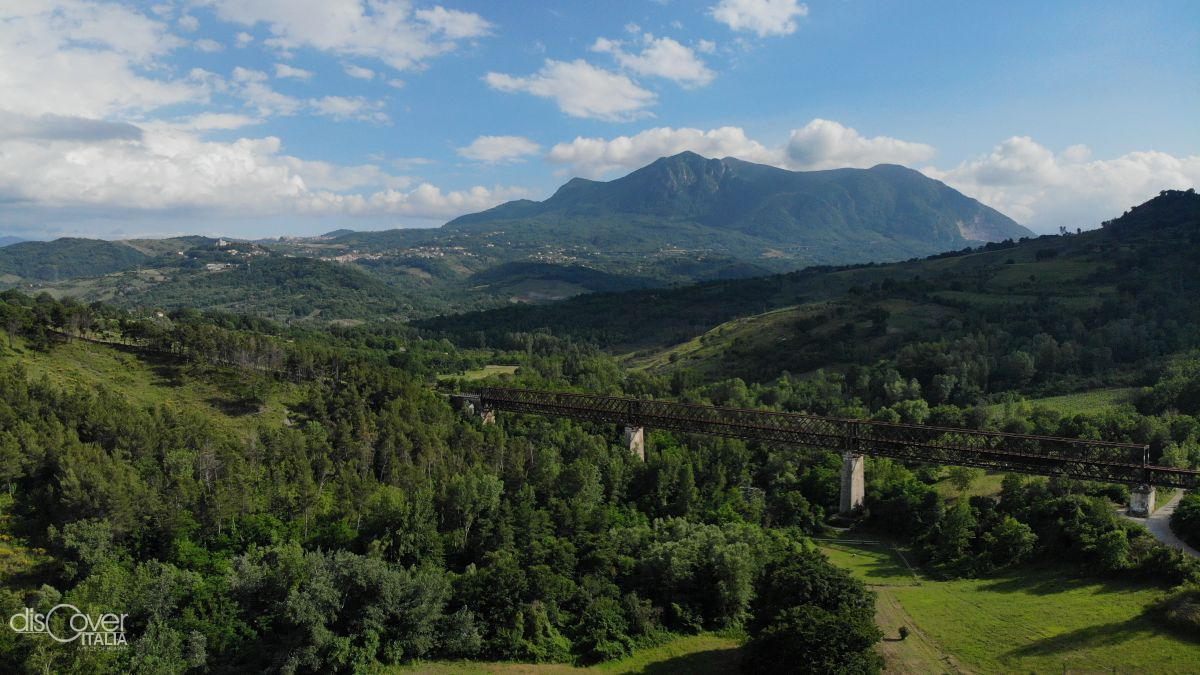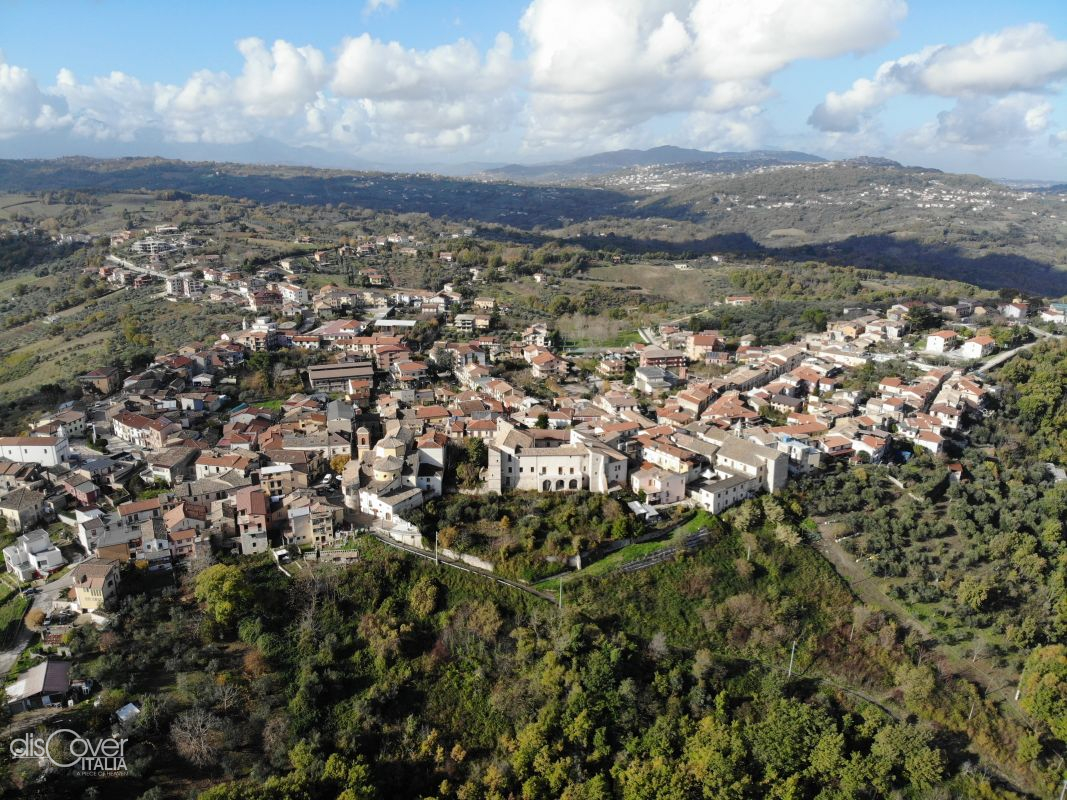A small hilltop village with a favorable position. Not, for once, for its military needs, but for a thriving agriculture, which over the centuries had its strength in viticulture.
Vineyards well exposed to the sun surround Lapio, gently sloping down towards the middle valley of Calore. With the green chain of Picentini, and in particular Mount Tuoro, to the south, at the back of the town. Arrival point of the provincial road connecting Avellino with inner Irpinia and a stop on the historic Avellino-Rocchetta Sant'Antonio railway, which has been lately reactivated for tourism purposes. The history of the rocky town, Lapideum, began during the longobards domination, perhaps at the origin of the current toponym, which others have instead wanted to link to the presence of bees or, more daring hypothesis, to the ancient name of the Lapiana grape, already known to the Romans, from which Fiano di Avellino DOCG is made, a production of excellence of that territory for at least eight centuries.
In the XI century, following Roberto il Guiscardo, the noble Norman family of Filangieri (sons of Angerio the Norman) arrived in Naples, that in Lapio, assigned to them as a fiefdom, would have taken deep and lasting roots, until the abolition of feudality. The oldest version of the baronial residence probably dates back to the XIII century, which stands in the highest part of the town and overlooks the valley of Calore. Every characters who gave prestige to the family passed there, always attached to the rulers of the moment. Since Richard, who in 1228, followed Frederick II in the crusade so much so that he was appointed governor of Jerusalem, acquiring the right to use the cross in the family coat of arms. And then in the XVII century, Hannibal, loyal to Ferdinand II of Austria, who was able to embellish the coat of arms with the imperial eagle. Without forgetting the knight Gaetano, one of the leading exponents of the European Enlightenment and of the Bourbon court of late eighteenth century. In the seventeenth-eighteenth century, coinciding with the period of greatest splendor of the family, the Palace, which was frequented especially in summer, was embellished at different times by authors certainly coming from the capital and worthy of the important client. The monumental complex holds over six hundred square meters of paintings also covering stairs, corridors and attic. Works of sacred or mythological subjects, with references (those from the eighteenth century) to the newly rediscovered Pompeian paintings, created in the first thirty years of the XVII century, above all with the fresco technique, to which an extensive use of tempera was also added in the following century.
Many are the churches in the village, witnessing the faith of the community of which four ancient brotherhoods are an expression. The mother church is dedicated to Saint Catherine of Alexandria. Behind the imposing facade, embellished with various architectural elements, there are three naves, housing important works of art such as the canvas of the Martyrdom of Saint Catherine. It’s also the tomb of Cardinal Giuseppe Caprio, a native of Lapio. Between the houses and, once upon a time, the workshops of the artisans, the church of Saint Joseph rises, with a single nave and a fine polychrome marble altar. The furnishings are all made of chestnut wood, which is also widely used in agriculture, and wine in particular. The soundbox of the pipe organ that dominates the interior of the sacred building from above is also made of chestnut. Of great value is the nativity scene, with 76 miniatures dating back to the second half of the 19th century. It originally was the noble chapel of the Filangieri palace, to which it is adjacent, the church of the Madonna of the Snow was built in 1598 and then rebuilt in 1903. On the facade we note, with the local stone, the gray breccia from the nearby Picentini Mountains. Next to the portal with a beautiful chestnut door, there are two Ionic columns. The interior features several mid-eighteenth-century paintings signed by Francesco Capobianco: four roundels on the walls and a large canvas on the ceiling, depicting a Virgin with Child and Saints. The church of the Madonna of Loreto was built in the XVII century, but was then completely rebuilt in 1893, with a single nave, bears among other valuable works, four paintings by Domenico Celentano of the XVIII century: another demonstration of how, thanks to Filangieris, artists of a good level from Naples reached a small center like Lapio. Outside the hamlet, before arriving there, we meet the Church of Carmine, built in the place previously occupied by a 17th century church. When the university decided to build a new graveyard in that area, in the second half of the 18th century, the Coven of Purgatory’s souls, dedicated to Madonna of Carmelo, was allowed to build a church nearby. Which is on two levels, one above ground and the other, reachable by a stone staircase behind the apse, underground. Among the works characterizing the territory of Lapio there also is a large steel bridge over the river Calore, connecting the Lapian bank and that of Taurasi for the Avellino / Rocchetta Sant'Antonio railway line, which in recent years has been restored to tourist use. Designed by the engineer Sangiorgi, the majestic work was built by the Italian Industrial Society of metal constructions of Castellammare di Stabia in a few months, from March to September, in 1893 and inaugurated on 20 September with a great celebration of the people. A monumental structure, avant-garde for the time that aroused great attention throughout the Peninsula with its three hundred meters in length and thirty-five meters above the valley. Due to these characteristics, the very inhabitants of Lapio proudly renamed it "Ponte Principe”, Prince Bridge.
The "Mysteries"
The particular Easter rites of Lapio date back to medieval traditions from Spain and widespread in some areas of Campania and, in particular, of Irpinia. They call them "Mysteries" and they are papier mache statues on a human scale depicting the events taking place in the last hours of Christ's life and also various moments of the Passion. Statues that in groups form the so-called "Tavolate", carried in procession on Good Friday together with the statues of the dead Christ and the Sorrowful Madonna. With a very heartfelt prologue from the evening of Holy Thursday to dawn on Friday, when two men walking around the streets of the hamlet, accompanied by the poignant sound of a trumpet and a drum, impersonate soldiers in search of Christ. The statues, Neapolitan manufacture, date back to 1810. The coven of S. Mary of the Snow e is the custodian of the "Mysteries" and of the rituals of the functions of Good Friday. The coven also has the duty of decide the order of the “Tavolate” during the solemn procession. Famous for Fiano, a wine already known in ancient times and favored by Frederick II, who ordered large quantities, and by the medieval rulers of the kingdom of Naples, Lapio also produces grapes in its territory for another DOCG, Taurasi. In addition, the soils of the valley are ideal for cultivating the precious "Ravece" quality olive trees from which the DOP Irpinia-Colline dell’Ufita extra virgin olive oil is obtained. Thanks to the great biodiversity found in the Lapiano territory, numerous qualities of honey are produced: wildflower, chestnut, acacia, sulla and sunflower. A Lapian honey factory in 2019 has been named by the International Honey Quality Competition, the best in the world.






Comments powered by CComment